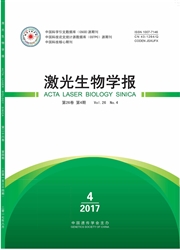

 中文摘要:
中文摘要:
抗辐射菌(Deinococcus radiopugnance)ATCC 19172株中存在约14.6 kb、8.7 kb、7.0 kb、3.65 kb、及2.45 kb等5种以上的隐秘性质粒,对其中的约2.45 kb的小型质粒pUE30进行了序列测定与分析,该质粒由2 467 bp的碱基对组成,其中包含了267 nt及1 068 nt的2个开放阅读框架(open reading frame,ORF)和一个AT-rich领域。经过与GenBank的数据库分析,其中267 nt的ORF(repC)与豆科根瘤菌(Rhizobium leguminosa-rum)及根癌农杆菌(Agrobacterium tumefaciens)由来的质粒的RepC蛋白质具有一定的同源性;1 068 nt的ORF(repD)与抗辐射菌(Deinococcus radiodurans)Sark株的质粒pUE10的RepU蛋白质、嗜热菌(Thermus sp.)ATCC27737株由来的质粒pMY1的RepA蛋白质具有较高的同源性。研究结果对于利用该小型质粒构建大肠杆菌-抗辐射菌属间的穿梭载体,表明抗辐射菌高效正确的DNA损伤修复机理等具有重要的意义。
 英文摘要:
英文摘要:
Cryptic plasmids 14.6 kb, 8.7 kb, 7.0 kb, 3.65 kb and 2.5 kb are existing in Deinococcus radiopugnance ATCC 19172 strain, sequence analysis of 2.5 kb plasmid pUE30 was carried. The results showed that the plasmid pUE30 had 2 467 bp, including two open reading frames (ORFs, 267 nt and 1 068 nt separately) and one AT-Rich domain; the ORF (repC) of 267 from D. radiopugnance ATCC 19172 was partly homological with the protein of RepC existing in Rhizobium leguminosarum and Agrobacterium tumefaciens, the ORF (repD) of 1 068 nt was highly homological with the RepU of plasmid pUE10 in D. radiodurans Sark strain and the RepA of plasimid pMY1 in ATCC 27737 strain from Thermos sp. Thus it is concluded : 2. 467 kb pUE30 can be used to develop a shuttle vector between Escherichia coli and Deinococcal bacteria, it has important significance in clearing the mechanism of DNA damage repair in Deinococcal bacteria.
 同期刊论文项目
同期刊论文项目
 同项目期刊论文
同项目期刊论文
 期刊信息
期刊信息
